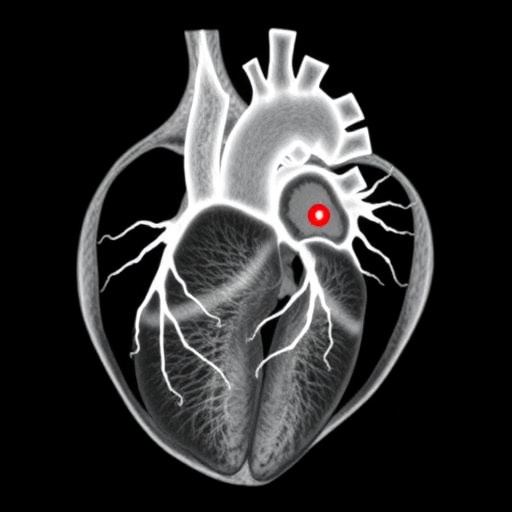In a groundbreaking development within the field of geriatric medicine, researchers have unveiled the SUGAR handshake intervention, a novel approach designed to combat hypoglycemia among the elderly population suffering from type 2 diabetes. This innovative program, rigorously evaluated through a pragmatic randomized controlled trial, has significant implications not only for patient safety but also for enhancing the quality of life in older adults living with this chronic condition.
Hypoglycemia, defined as abnormally low levels of blood glucose, is a critical concern for elderly patients with type 2 diabetes. The repercussions can be severe; episodes of hypoglycemia can lead to unconsciousness, falls, and in extreme cases, death. The SUGAR handshake intervention emerged from an urgent need to address these risks in an aging demographic that exhibits unique physiological responses to insulin and dietary changes.
The study involved a diverse group of elderly participants who were monitored closely during the trial. Researchers aimed to assess the effectiveness of the SUGAR handshake intervention in a real-world setting, identifying both strengths and areas for improvement. This pragmatic approach ensures that findings are applicable in everyday healthcare scenarios, which is essential for real-world implementation.
One of the primary objectives of the SUGAR handshake intervention was to establish a structured yet flexible framework for managing blood glucose levels among participants. Utilizing educational components that emphasized self-monitoring and awareness, the program encouraged participants to actively engage in their own health management. Empowering patients to take charge of their diabetes not only promotes better health outcomes but also instills a sense of agency that is crucial for mental well-being.
Central to the intervention was the concept of ‘handshake agreements’ between healthcare providers and participants. This collaborative approach involves setting personalized goals for blood glucose management, ensuring that both parties are invested in the outcome. By fostering an atmosphere of cooperation and mutual accountability, the SUGAR handshake intervention has the potential to enhance compliance with diabetes management protocols, thereby mitigating the risks associated with hypoglycemia.
Moreover, the educational sessions included in the SUGAR intervention were designed to be interactive and engaging. By utilizing role-playing scenarios and practical demonstrations, researchers aimed to improve the understanding of dietary choices and their immediate effects on blood glucose levels. This hands-on approach not only enhances learning but also allows participants to visualize their health goals, making them more tangible and achievable.
As part of the process evaluation, qualitative feedback was gathered from participants regarding their experiences with the SUGAR handshake intervention. Themes of empowerment, confidence, and community support emerged as recurring motifs. Participants reported feeling more in control of their health and more connected to their healthcare providers, which significantly improved their adherence to dietary and lifestyle recommendations.
The study also scrutinized the barriers that elderly patients face when managing their diabetes independently. Common obstacles, including sensory impairments, cognitive decline, and social isolation, were highlighted, enabling researchers to tailor the intervention to better suit the needs of this vulnerable population. The insights gained from this analysis underscore the necessity for healthcare providers to be adaptable and responsive to the unique challenges presented by aging patients.
In tandem with the qualitative findings, quantitative metrics from the trial revealed promising results. Participants who engaged in the SUGAR handshake intervention exhibited a marked reduction in hypoglycemic episodes compared to those receiving standard care. This quantitative improvement substantiates the intervention’s efficacy and advocates for its broader implementation in clinical settings.
Furthermore, the SUGAR handshake intervention emphasizes the importance of ongoing support in diabetes management. The researchers documented the need for regular follow-ups and check-ins, demonstrating that sustained engagement is key to maintaining the behavioral changes instilled during the intervention. The findings suggest that healthcare systems need to prioritize continuous support to cultivate lasting improvements in patient outcomes.
The implications of this research extend beyond individual patients; they resonate within the larger scope of public health policy. As the global population ages, healthcare systems must evolve to meet the needs of older patients living with chronic conditions like type 2 diabetes. The SUGAR handshake intervention presents a model that encourages proactive management and collaboration between patients and healthcare professionals, paving the way for scalable solutions in diabetes care.
In conclusion, the SUGAR handshake intervention serves as a beacon of hope for elderly individuals with type 2 diabetes facing the perilous risk of hypoglycemia. The rigor of its pragmatic evaluation underscores its potential for real-world application, while the collaborative framework cultivates a supportive environment in which elderly patients can thrive. As healthcare providers and researchers continue to explore innovative strategies for diabetes management, interventions like SUGAR hold the promise of transforming the landscape of chronic disease care for aging populations.
By shedding light on the unique challenges faced by elderly individuals with diabetes, this study not only highlights the necessity for tailored interventions but also reaffirms the role of patient engagement and education in fostering better health outcomes. In a world where diabetes is increasingly becoming a global health crisis, the SUGAR handshake intervention exemplifies how collaborative, evidence-based approaches can lead to significant advancements in patient care.
As we move towards a future shaped by an aging population and a rising incidence of diabetes, it is imperative to recognize the importance of addressing the specific needs of this demographic. The SUGAR handshake intervention represents a step in the right direction, focusing on empowerment, education, and community support to enhance the quality of life for elderly individuals grappling with the complexities of managing type 2 diabetes.
Furthermore, continuous research and development are essential to refine interventions like SUGAR, ensuring they remain relevant and effective as healthcare landscapes evolve. Healthcare providers must remain committed to innovation and adaptability, utilizing feedback from interventions to create tailored solutions that resonate with the communities they serve.
In summary, the SUGAR handshake intervention stands at the forefront of efforts to mitigate the risk of hypoglycemia among the elderly with type 2 diabetes. Its comprehensive, collaborative approach offers a promising model for future interventions aimed at enhancing the health and well-being of older adults facing chronic health challenges.
Subject of Research: Elderly individuals with type 2 diabetes and hypoglycemia
Article Title: The SUGAR handshake intervention to prevent hypoglycaemia in elderly people with type 2 diabetes: process evaluation within a pragmatic randomised controlled trial.
Article References:
Almomani, H.Y., Ayre, H.M., Powell, R.A. et al. The SUGAR handshake intervention to prevent hypoglycaemia in elderly people with type 2 diabetes: process evaluation within a pragmatic randomised controlled trial.
BMC Geriatr 25, 753 (2025). https://doi.org/10.1186/s12877-025-06361-2
Image Credits: AI Generated
DOI: 10.1186/s12877-025-06361-2
Keywords: SUGAR handshake intervention, type 2 diabetes, hypoglycemia, elderly patients, process evaluation, pragmatic randomized controlled trial
Tags: addressing hypoglycemia riskschronic condition managementgeriatric medicine advancementsinnovative healthcare solutions for aging populationpatient safety in older adultsphysiological responses to insulin in elderlypreventing hypoglycemia in seniorsquality of life for seniorsrandomized controlled trial in elderlyreal-world healthcare implementationSUGAR handshake interventiontype 2 diabetes management





